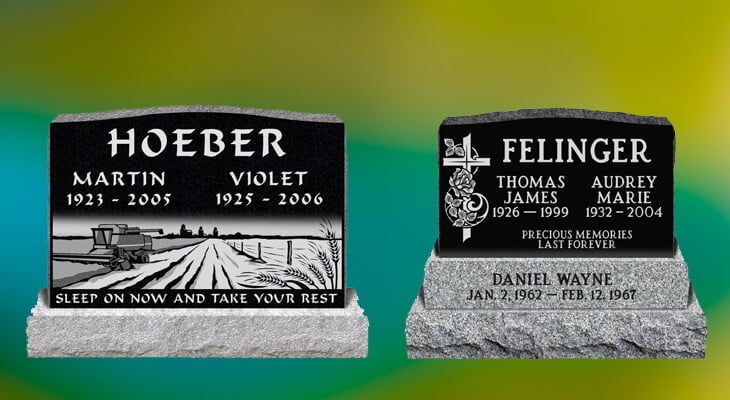July 8, 2020

Cemetery monuments like raised headstones and flat grave markers are essential to pay meaningful tributes to our loved ones who have passed away. The memorial design process can be emotional yet extremely rewarding in the long run when you’re finally able to create a design that can truly represent the memory of the deceased.
Be that as it may, with the availability of many design options, it may become an overwhelming experience for you when selecting all the options and specifications you want. Apart from choosing the memorial’s material, size, and style, there are different personalization options to consider, such as design, symbols, inscriptions, and images to be set in stone.
One of the significant decisions you’ll need to make in choosing a cemetery memorial in engraved or etched form. Both engraving and etching are two of the most popular headstone design methods, quite different from each other. It’s vital to know about both of these design techniques in detail in order to differentiate between them accurately.
Here, we’ll discuss critical differences between these two processes to make an informed decision about the type of design on your monument.
Engraving is one of the most common procedures used to produce lettering, symbols, and images for designing cemetery stones. It’s a process that involves creating artworks or cutting different design patterns into a hard surface like a granite headstone.
Some artisans prefer to use the traditional way of engraving, which involves utilizing a hammer or chisel for granite engraving. The most widely used technique used for granite memorial carving is sandblasting, due to its increased precision and efficiency.
The sandblasting method of monument engraving involves the usage of compressed air in order to shoot tiny sand particles at high pressure at a granite stone surface. This results in the eroding of the surface and is known to be one of the most effective methods for engraving granite surfaces.
The sandblasting method is well-suited for carving out lettering, and can effectively be utilized to make stunning designs on both dark and light colors of polished granite surfaces.
The etching process is most suitable for making designs when you need to incorporate increased details into your granite flat grave marker. While engraving creates deeper cuts, etching can be used to make shallower and increasingly detailed design patterns.
Etching can be performed on various memorial stones either by hand or using a laser technique. Hand etching is a complicated procedure to carry out, requiring many skill-sets – though it adds some unique customization and character that cannot be achieved through laser work.
Monument makers using the hand etching technique can create highly attractive images and transform them into exclusive artwork that gives granite stone a unique character. Although this method takes much time to complete, designs made with hand etching can render spectacular results.
Laser etching can create increasingly accurate, comprehensive recreations and representations of real designs and photos. During this procedure, a computerized laser is utilized to burn away the cemetery stone’s surface. This method of design creation is much less costly as compared to traditional hand etching.
The technique of laser etching doesn’t require that much skill or time to execute final designs and is also not as crafty as the hand etching method. Although laser etching doesn’t create enough depth for enhanced contrast for letterings and designs, it’s still a useful choice for the right kind of designs.
Summit Memorials is proud to help you honor the memories of your loved ones with high-quality granite monuments and headstones across Alberta and Saskatchewan. Visit our website to explore our selection of granite memorials or contact us for customized care.

